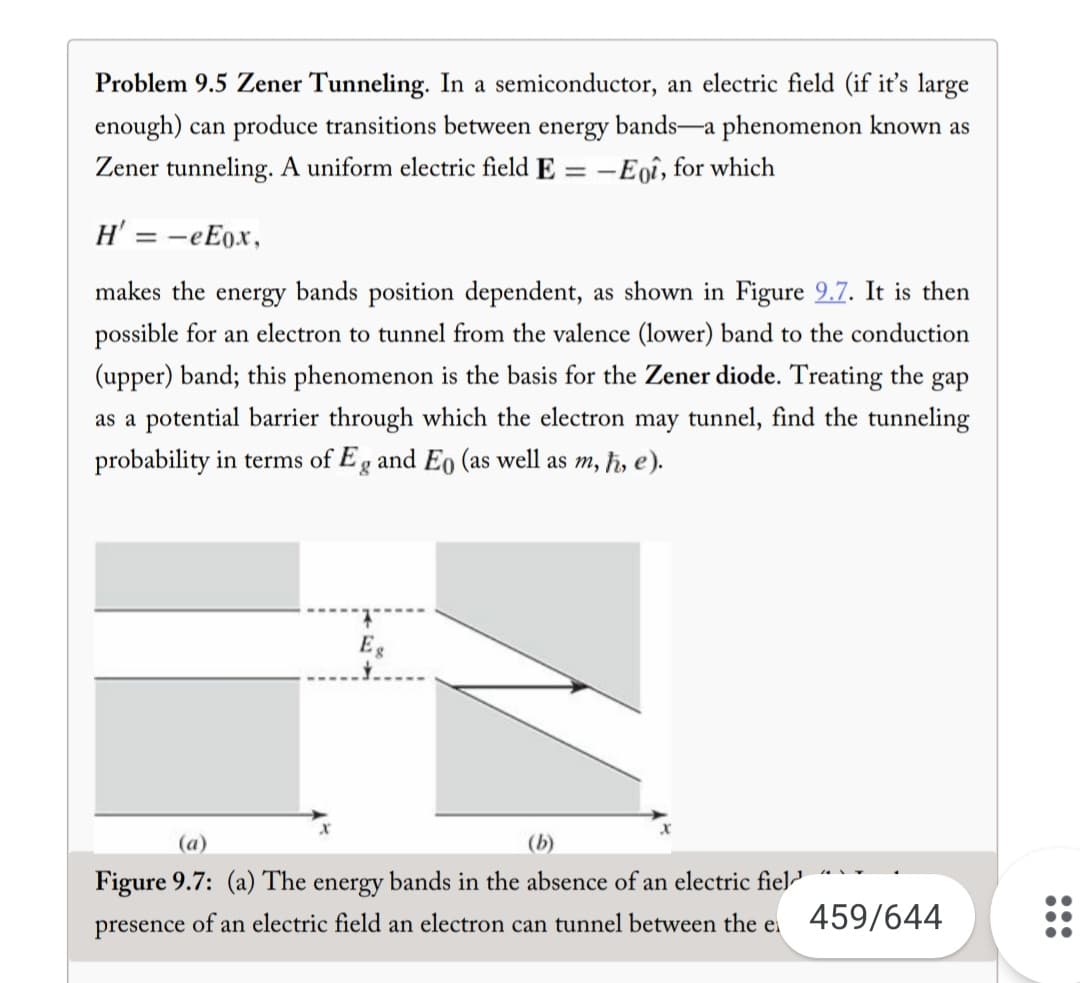Problem 9.5 Zener Tunneling. In a semiconductor, an electric field (if it's large enough) can produce transitions between energy bands-a phenomenon known as Zener tunneling. A uniform electric field E = -Eoî, for which H' =-eEox, makes the energy bands position dependent, as shown in Figure 9.7. It is then possible for an electron to tunnel from the valence (lower) band to the conduction (upper) band; this phenomenon is the basis for the Zener diode. Treating the gap as a potential barrier through which the electron may tunnel, find the tunneling probability in terms of Eg and Eo (as well as m, ħ, e). Eg (a) (b) Figure 9.7: (a) The energy bands in the absence of an electric fiel presence of an electric field an electron can tunnel between the e 459/644
Problem 9.5 Zener Tunneling. In a semiconductor, an electric field (if it's large enough) can produce transitions between energy bands-a phenomenon known as Zener tunneling. A uniform electric field E = -Eoî, for which H' =-eEox, makes the energy bands position dependent, as shown in Figure 9.7. It is then possible for an electron to tunnel from the valence (lower) band to the conduction (upper) band; this phenomenon is the basis for the Zener diode. Treating the gap as a potential barrier through which the electron may tunnel, find the tunneling probability in terms of Eg and Eo (as well as m, ħ, e). Eg (a) (b) Figure 9.7: (a) The energy bands in the absence of an electric fiel presence of an electric field an electron can tunnel between the e 459/644
Related questions
Question

Transcribed Image Text:Problem 9.5 Zener Tunneling. In a semiconductor, an electric field (if it's large
enough) can produce transitions between energy bands-a phenomenon known as
Zener tunneling. A uniform electric field E
=
-Eqî, for which
H' = - eEox,
makes the energy bands position dependent, as shown in Figure 9.7. It is then
possible for an electron to tunnel from the valence (lower) band to the conduction
(upper) band; this phenomenon is the basis for the Zener diode. Treating the gap
as a potential barrier through which the electron may tunnel, find the tunneling
probability in terms of Eg and Eo (as well as m, ħ, e).
X
Eg
(a)
(b)
Figure 9.7: (a) The energy bands in the absence of an electric fiel
presence of an electric field an electron can tunnel between the e
459/644
Expert Solution
This question has been solved!
Explore an expertly crafted, step-by-step solution for a thorough understanding of key concepts.
This is a popular solution!
Trending now
This is a popular solution!
Step by step
Solved in 2 steps with 2 images
